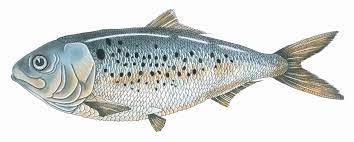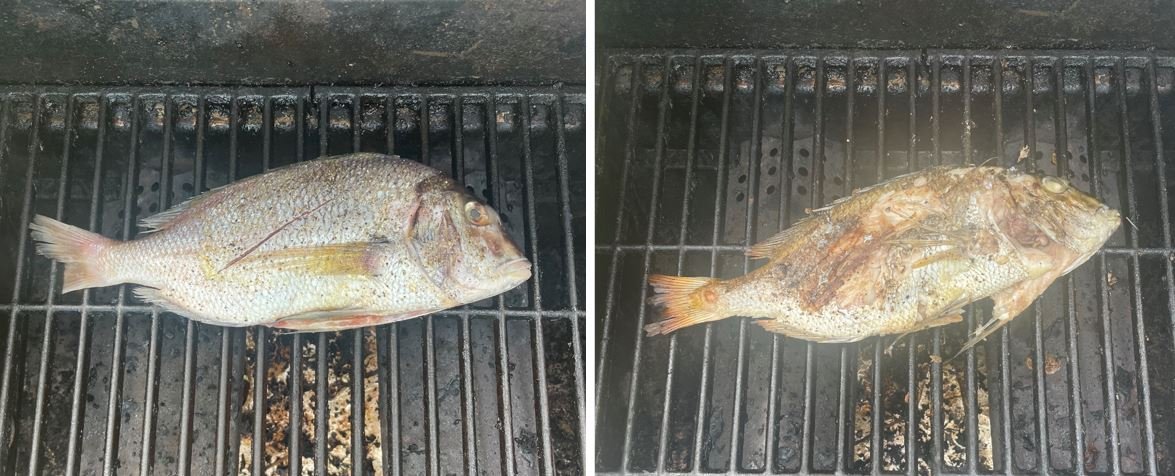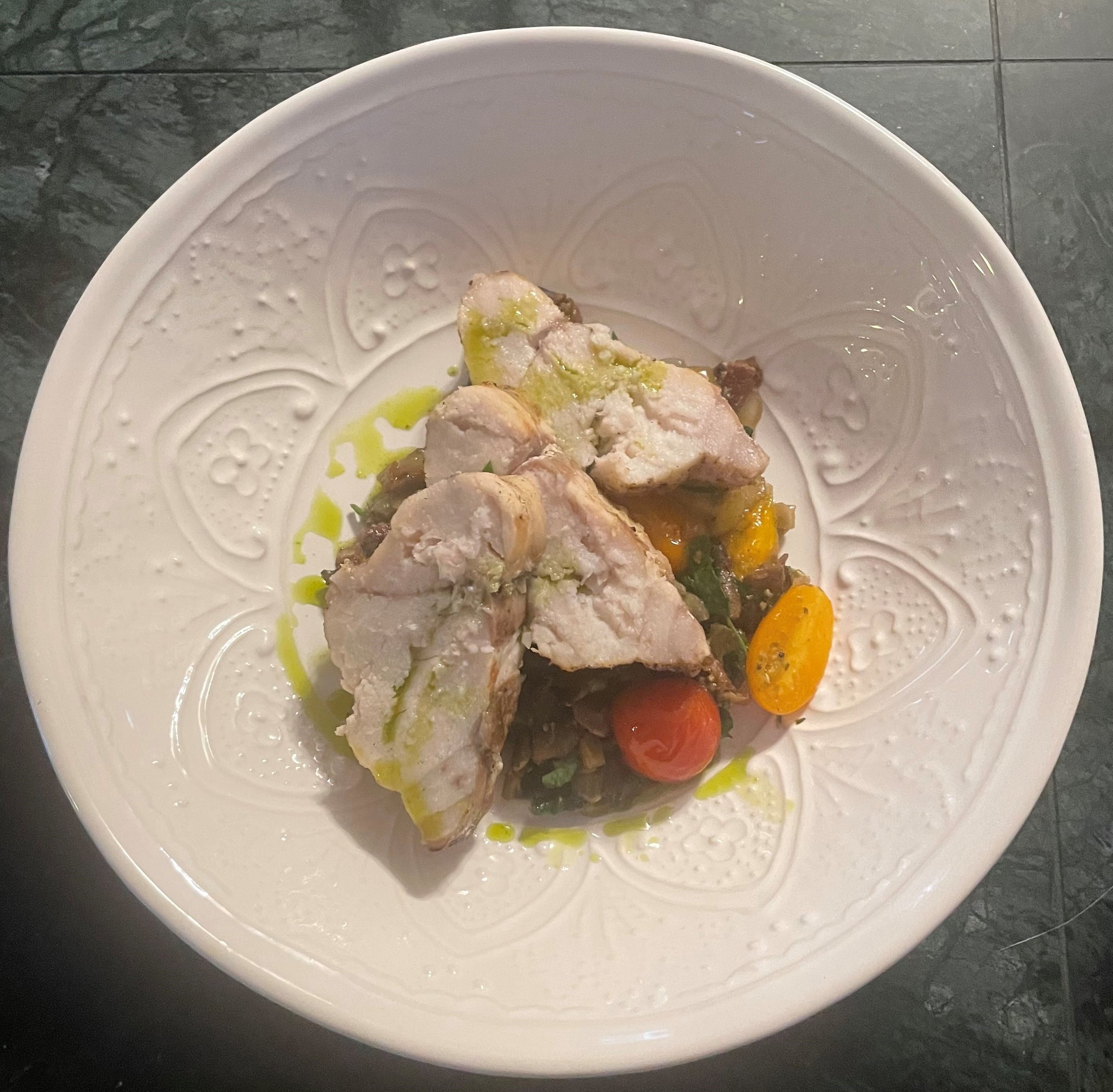Fish on the Grill
Chapter One – What’s Scup?
I have this memory from childhood. We were driving and came upon a mess in the road…don’t worry this isn’t morbid. A flatbed truck must have swerved and then it dumped its cargo, barrels full of small fish. I remember being astounded at the sight of thousands of fish all over the road and, in the stifling summer heat, the smell had started to rise. In the next piece of this fragmented memory, my grandfather looks at the fish and says in kind of a dismissive way, “Ah…it’s all just pawgies.”
I had probably just started taking an interest in fishing when I saw all those little fish strewn across the roadway. As I started saltwater fishing more and more, I heard that word a lot. Of course, I was a teenager before I realized it was spelled “porgies” instead of “pawgies.” Welcome to southern New England. But I also heard the name “pogies” and, although I knew this was a different word, I just assumed it was a slightly different dialect referring to the same fish…scup.
Illustration of a scup. (delaware.gov)
Years later, with the Internet at my fingertips, I decided to spend the ten minutes needed to clear this up. Thank you, Wikipedia. Long story short, scup are indeed porgies (pawgies), but so are a lot of other fish. The term describes a family of fish that have physical features like a scup. The term pogies is also a vernacular term, but not for scup-like fish, this word is a local name for menhaden. These little critters are also near and dear to my heart as they swim in schools of thousands up the Providence River further north into the Woonasquatucket River. These are the rivers of my hometown, the centerpiece and soul of a city on the rise. The menhaden are a sign that these polluted rivers are, day by day, getting cleaner and welcoming home members of a once shattered ecosystem…one by one.
Illustration of a menhaden (maine.gov)
Why was I bothering to spend the ten minutes needed to clear this up? Well, as I mentioned, I used to fish and catch scup as a kid. Then the other day I was at the grocery store and couldn’t help but notice all the fish in the case just looked great…vibrant, shining, and colorful. It was clear at a glance they had received most of what was on display that morning. Among the bright fillets of cod and salmon were two rows of glistening whole scup, and I couldn’t resist. The fish were gutted and (more importantly) scaled, so no messy work for me. I figured I’d just check it out, grill it whole and see if there was any magic.
This was a weekend grocery run and, when I got home, the house was pretty quiet. My wife was headed out the door and I’d be on my own for lunch…perfect time for an experiment! I fired up the grill and got it nice and hot. A little oil and salt on the fish, and onto the iron.
Fish on a grill…the thought scares a lot of people with visions of a flaky disaster as you try to flip or move the fish about. Obviously this is where tuna, swordfish, and (to a lesser degree) salmon, have the advantage. But having a whole fish, regardless of the species, helps a lot in this regard. With the bones and skin holding things together, grilling whole fish is not something to fear. Like so many other things in cooking, the key is to be patient and don’t constantly nudge, poke, or otherwise move the fish because you want to see how it’s doing. Let it sit, let that skin cook and become non-stick before you start poking around to check things. Same approach applies when you eventually flip it…let it sit, let it cook for crying out loud!
I didn’t time it, but I can’t imagine it was more than 8-10 minutes on each side. When everything inside the cavity looked cooked and the fish looked a bit brittle, it was time to plate.
Before and after shot of scup. Note some of the skin was lost in the process, but generally everything stayed intact.
The day before this, I had made a dip for a party. It was a pesto of parsley, arugula, toasted walnuts, and lemon. While it was still in the food processor, I threw in a small chunk of feta cheese for flare. So this pesto was waiting in the fridge.
Step one was to pour a puddle of extra virgin olive oil into a sauté pan and slowly bring it up to heat…not super hot…but hot enough to get a little bit of a sizzle sound from a handful of cherry tomatoes that were cut in half. I gave these tomatoes just enough time to start softening, then threw in a heaping tablespoon of the pesto. It went in as a solid clump, but stirring it around in the pool of olive oil and tomatoes broke it down and turned the mixture into a beautifully bright, speckled sauce. A squeeze of fresh lemon juice, some freshly ground black pepper, and it was ready to go.
Light fresh flavors for such a light fresh fish.
I’ve eaten a lot of whole fish, so I wasn’t going into the process totally blind. With that said, every fish is different and I learned a few lessons. First, as little as this fish is, it does have nice cheeks, and these should not be overlooked. Second, the cavity area is shrouded with some serious pin bones and I walked headlong right into that trap eating the first side of the fish. Even though I improved my approach on the second side, there’s no getting around this is a bony fish. My hope is that this does not discourage anyone, because it was absolutely delicious—light, clean flavor and soft buttery texture. Just understand that you’ll be using your hands and pulling bones out of your mouth from time to time. So this should be served with the sort of friends who are happy to do that with you…which are, of course, the best of friends.
Chapter Two – Rediscovering the Monk
Sometimes this thing happens to me in the grocery store. As I’m walking through, something catches my attention…a particular cut of meat, piece of fish, even a vegetable. I get kind of fixated on it mentally, but there’s really no clear, immediate reason why. It’s happened to me enough that I know what to do now, the whole thing is pretty routine. I just need to stroll around the store a bit, maybe continuing my shopping, maybe just strolling…thinking about that piece of food. Within 10-15 minutes, a meal takes shape around that piece of food in my brain, or maybe an experiment, and then I go back to buy it.
This happened not long after the scup lunch. In the fish display at another store, there was an unusually large, whole piece of monkfish. I stared at it.
“Can I help you with something?”
“Ahh…just looking right now.”
I walked away and did a slow lap around the produce section, picked up a couple of items, then slowly walked past the fish again. Nothing yet…had to walk away again.
Somewhere in the prepared foods section, maybe ten minutes later, things came into focus. With the experience of the scup fresh in my mind, I realized this big piece of monkfish reminded me, in its shape, of pork tenderloin and I needed to grill it whole.
Monkfish holds a special place in my heart. I had cooked a lot in blue collar joints before I took on my first high-end job at Upstairs at the Pudding in Cambridge, MA. I hope to write more about that experience later but, suffice to say, it was an incredibly special time in my life. It was at this restaurant that I learned to be an excellent cook and almost every day on the job seemed miraculous. I worked with an amazing crew who really took me under their wings. We listened to great music, partied like rock stars, and made magic happen in that kitchen night after night. In particular, Chef de Cuisine JoAnne LeBlanc was a true mentor to me. Her selfless instruction and guidance changed my life forever in the best of ways. Among many other culinary firsts, JoAnne taught me how to cook monkfish and I still remember the homemade, hand rolled, hand cut, tarragon infused tagliatelle we served with pan-seared monkfish and light shiitake mushroom cream sauce. If I concentrate, I can see every detail of that dish in the pan and on the plate. Best of all, I can still taste it.
Back to the story at hand…the giant piece of the “poor man’s lobster” was wrapped up and paid for. I brought it home and trimmed it up, slicing away most of the membrane that is analogous to silverskin on a pork tenderloin. Headed to the grill, I had no idea what to expect in terms of it sticking or falling apart. Knowing it has a firm texture, I was optimistic and, as always, got that grill surface as hot as I could get it before coating the fish in oil, salt, and pepper…then laying it down.
The results far exceeded my expectations. It was surprisingly easy to move this piece of fish around, first rolling it to get each side firmly cooked and then moving it to the right place on the grill to just sit and cook with the cover down. Knowing when it was done was tricky and I wouldn’t blame the home cook who wants to use an instant-read thermometer. In the second picture (below), you can see the “seam” running the length of the fish that I kept opening. I wanted to peek inside to see white, fully cooked fish…but the monkfish was deceptive. I just kept seeing a translucent shade that looked more like uncooked fish. This never really changed, and I just finally pulled the fish off the grill thinking “this thing has to be done by now.” As a result of my confusion, I may have overcooked it just a tiny bit, and I’ll know not to be fooled next time by what my eyes tell me. The good news with monkfish, it has more room for error than many other fish. If you “go over” a little bit with monkfish, it’s not the end of the world. The firm, dense texture can handle a little extra cooking time.
Note how the fish changed shape. The heat made it contract and become thicker…more uniform, which was perfect for slicing.
Once the fish was able to rest, maybe 5-10 minutes, I sliced it the same way I might slice a pork tenderloin. It was beautiful! I made a similar sauce as I had for the scup, but knowing the flavor of the monkfish would be richer, added sautéed mushroom and bacon for more depth. This presentation was an absolute home run and I can’t wait to do this for a dinner party. Grilling this fish was surprisingly easy and, more likely than not, it will be something my dinner guests have never tried. Even more exciting, the versatility of the monkfish allows for a wider range of flavor presentations than most other fish varieties. You can do a rich “winter-friendly” presentation like the aforementioned mushroom cream, as well as a summer presentation with fresh tomatoes, arugula, and grilled Vidalia onions. Monkfish can accommodate chilis, curries, and all manner of Asian flavor combinations. It truly is one of the most versatile fish out there…just think twice before looking up an actual picture of this beast on the Internet!






